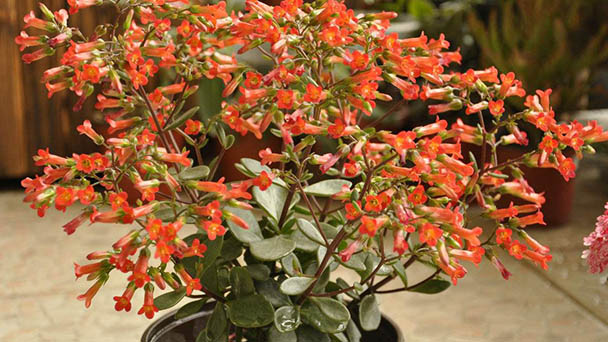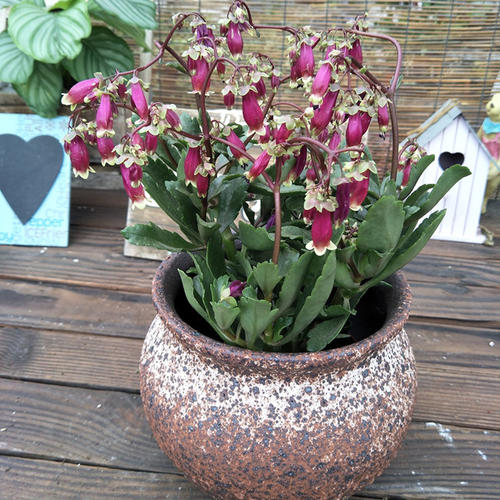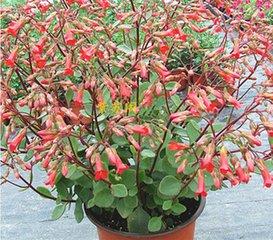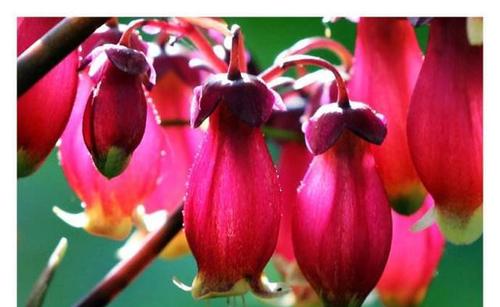How to grow Kalanchoe porphyrocalyx
Written by Maggie
Jan 26 2021

Kalanchoe porphyrocalyx has recently become people's new favorite, because Kalanchoe porphyrocalyx is very petite, and its flowers are compact and beautiful, so it is very popular. But many flower lovers do not understand how to grow Kalanchoe porphyrocalyx.

Kalanchoe porphyrocalyx Care and Grow
Many flower lovers grow Kalanchoe porphyrocalyx at home just because they like it, but they don't know how to raise Kalanchoe porphyrocalyx. In fact, if you don't pay attention, Kalanchoe porphyrocalyx will have various problems. In the process of family breeding Kalanchoe porphyrocalyx, the following points are very important.
1. Soil
Kalanchoe porphyrocalyx still has high requirements on the amount of soil. Although kalanchoe porphyrocalyx is not restricted to soil, it is easy to rot roots in heavy clay soil, and it's better to grow in loose and fertile slightly acidic sandy loam. In addition, it is best to grow in clay pots with good permeability, but it is unsightly if placed indoors. It is recommended to use plastic or ceramic pots indoors.
2. Light
Kalanchoe porphyrocalyx is a short-day plant, which is more sensitive to photoperiod response, so it is not necessary to see sunlight frequently. For plants that grow and develop well, give short-day (8-9 hours of light per day) treatment for 3 to 4 weeks before flower buds bloom. .
3. Watering
Kalanchoe porphyrocalyx grows more vigorously in a slightly humid environment, so proper watering is required. Excessive drought or low temperature will slow down growth, red leaves, and postpone flowering. Watering should be controlled in midsummer, and Kalanchoe porphyrocalyx should be prevented from being exposed to rain during the rainy season. Standing water will cause Kalanchoe porphyrocalyx to rot and even die.
4. Fertilization
In raising Kalanchoe porphyrocalyx, fertilization is also an important item. When planting, add some bone meal or NPK compound fertilizer as base fertilizer. If it is in the flowering period, if you want Kalanchoe porphyrocalyx to spend a lot, there is a great demand for fertilizer during the full flowering period. Phosphorus and potassium-based fishy fertilizer should be applied once a week before flowering to promote the differentiation of flower buds. The flowering period is dominated by the application of quick-acting potassium dihydrogen phosphate, with a concentration of 2{bf} as appropriate, once every 10 days.

Kalanchoe porphyrocalyx growing precautions
1. Fertilization during flowering
Kalanchoe porphyrocalyx has a long flowering period, and everyone has different habits. If you regularly fertilize, you must keep it. To break the rule of no fertilization during the flowering period, apply a thin nitrogen, phosphorus and potassium fertilizer once a month to ensure that the plants after flowering Will not grow poorly because of lack of fertilizer.
2. Set up support
When Kalanchoe porphyrocalyx plants grow taller, bamboo poles should be set up to support them. Otherwise, the stems and leaves that gradually grow taller will sway, which is very unsightly.

Latest Updated
- Benefits of Bugleweed - 7 Science-backed Health Benefits
- Bugleweed Dangers & Side Effects - Is It Poisonous?
- How to Plant Evergreen Trees - What You Should Know
- When to Plant Evergreens - Grow Guide for Evergreen Trees
- 12 Wonderful Evergreen Shrubs for Your Garden
- 12 Popular Evergreen Plants with Pictures for Beginners
- When And How To Prune A Lilac Bush Like a Pro
- How to Grow & Care for Lilac Vine (Hardenbergia Violacea)
- Japanese Lilac Tree (Syringa Reticulata) Care & Propagation Guide
- Shumard Oak Pros and Cons - What to Know
Popular Articles
- Winter maintenance of Antirrhinum Majus
- How to Grow Terminalia Mantaly Tree
- How to Grow and Care for Crossostephium Chinense
- How to grow Antirrhinum Majus in spring
- Peristeria Elata (Dove Orchid) Profile: Info & Care Guide
- Underwatered Snake Plant (Sansevieria Trifasciata) - Signs And How To Fix
- How to Care for Brazilian Jasmine Plant (Mandevilla Sanderi)
- How to Grow & Care for Graptopetalum Purple Delight in Summer
- Rosa Chinensis (China Rose): Plant Growing & Care Tips
- How to Care for Baby Sun Rose (Aptenia Cordifolia)